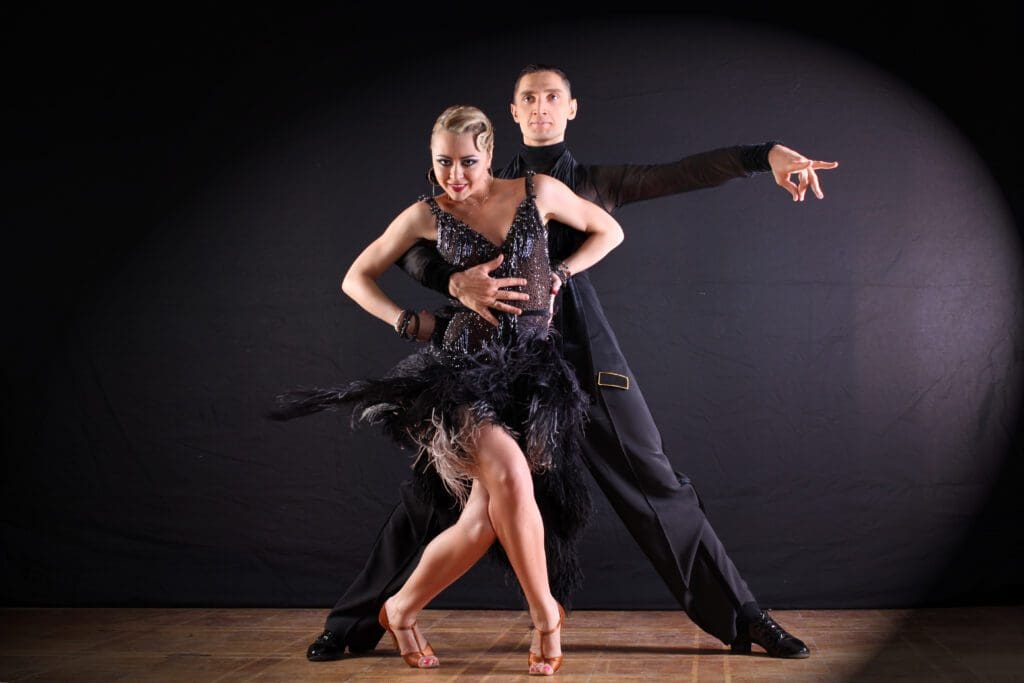Mambo
Mambo History
The Mambo, a vibrant and energetic dance, has a history deeply rooted in Cuban culture:
Cuban Origins:
- The Mambo originated in Cuba in the 1930s.
- It was developed by combining Afro-Cuban rhythms with the structure of Son music, a popular Cuban genre.
Development by Perez Prado:
- The dance became widely popular in the 1940s, largely thanks to Cuban musician Perez Prado.
- Prado’s music introduced Mambo to a broader audience, both in Cuba and internationally.
Spread to the United States:
- The Mambo reached the United States in the late 1940s and early 1950s.
- It became particularly popular in New York City, where it influenced and was influenced by local jazz musicians.
Peak Popularity and Evolution:
- The 1950s saw Mambo’s peak popularity, especially in dance halls and nightclubs.
- The dance evolved over time, incorporating elements from other styles like Swing and Tap.
Influence on Other Dance Styles:
- The Mambo laid the groundwork for other Latin dances, notably the Cha-Cha and Salsa.
- Its influence is seen in the emphasis on rhythm and the incorporation of complex footwork.
Modern Presence:
- Today, while the Mambo is less prominent than during its heyday, it remains an important part of Latin American dance culture.
- It’s celebrated for its lively energy, rhythmic complexity, and historical significance in the evolution of dance.
In summary, the Mambo is a dynamic dance with Cuban origins that gained international fame in the mid-20th century, influencing numerous other Latin dance styles with its rhythmic vitality and spirited movement.
Mambo Characteristics
The Mambo is a lively, rhythmic dance known for its energetic steps, sharp movements, and Cuban flair. It features a quick tempo with a strong emphasis on beats 2 and 4, intricate footwork, and spirited body movements. The Mambo allows dancers to express themselves with freedom and creativity, making it a vibrant and exciting dance.
Mambo Music Information
Mambo music, integral to the dance’s lively and energetic style, has several key characteristics:
Time Signature: Mambo music typically uses a 4/4 time signature, providing a steady rhythmic foundation.
Tempo: The tempo is generally fast, contributing to the dance’s vibrant and dynamic nature. It often falls around 104-120 beats per minute (bpm).
Rhythmic Pattern: The rhythm of Mambo music is accented on the second and fourth beats in a measure, known as the “Mambo rhythm.” This gives the music its distinctive syncopated feel.
Instrumentation: Mambo bands usually include trumpets, trombones, saxophones, bass, piano, and a variety of percussion instruments like congas, bongos, and timbales. This creates a rich, layered sound.
Influence and Fusion: Mambo music blends Afro-Cuban rhythms with elements of jazz and big band, resulting in a unique and powerful sound.
These musical elements together define the exhilarating and compelling nature of Mambo music, driving the dance’s energetic and expressive movements.
